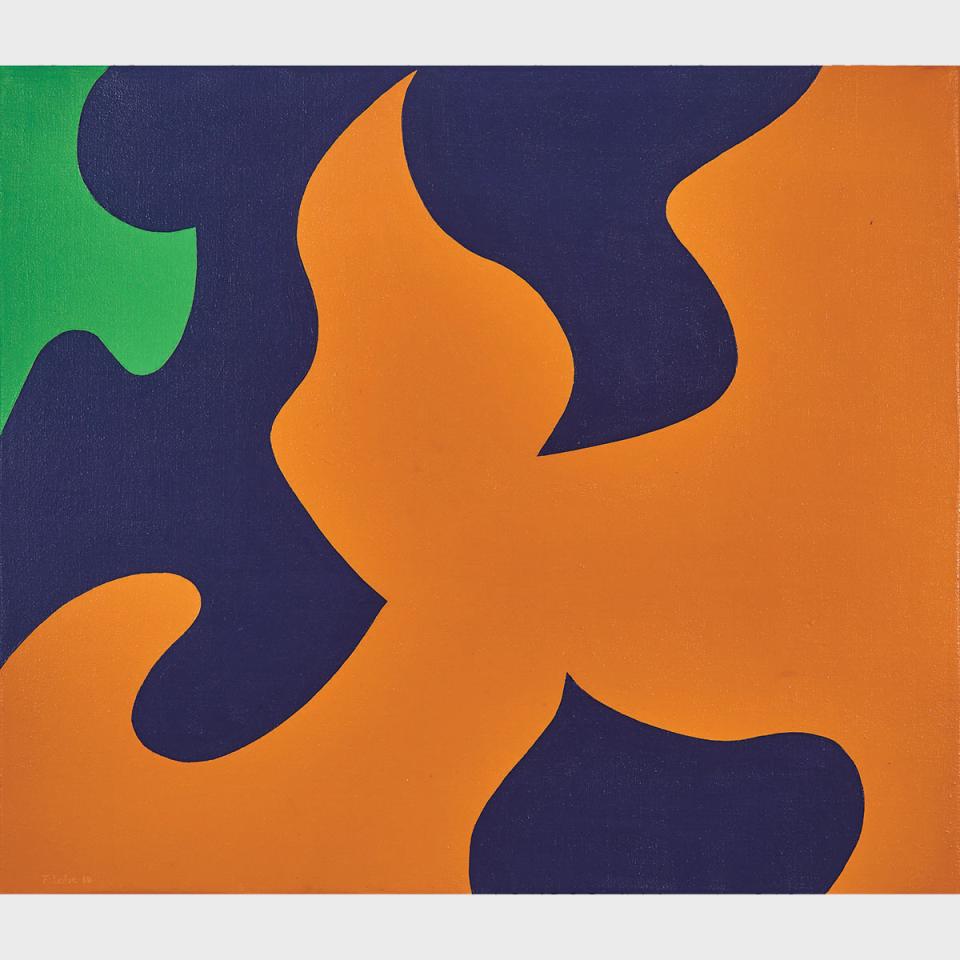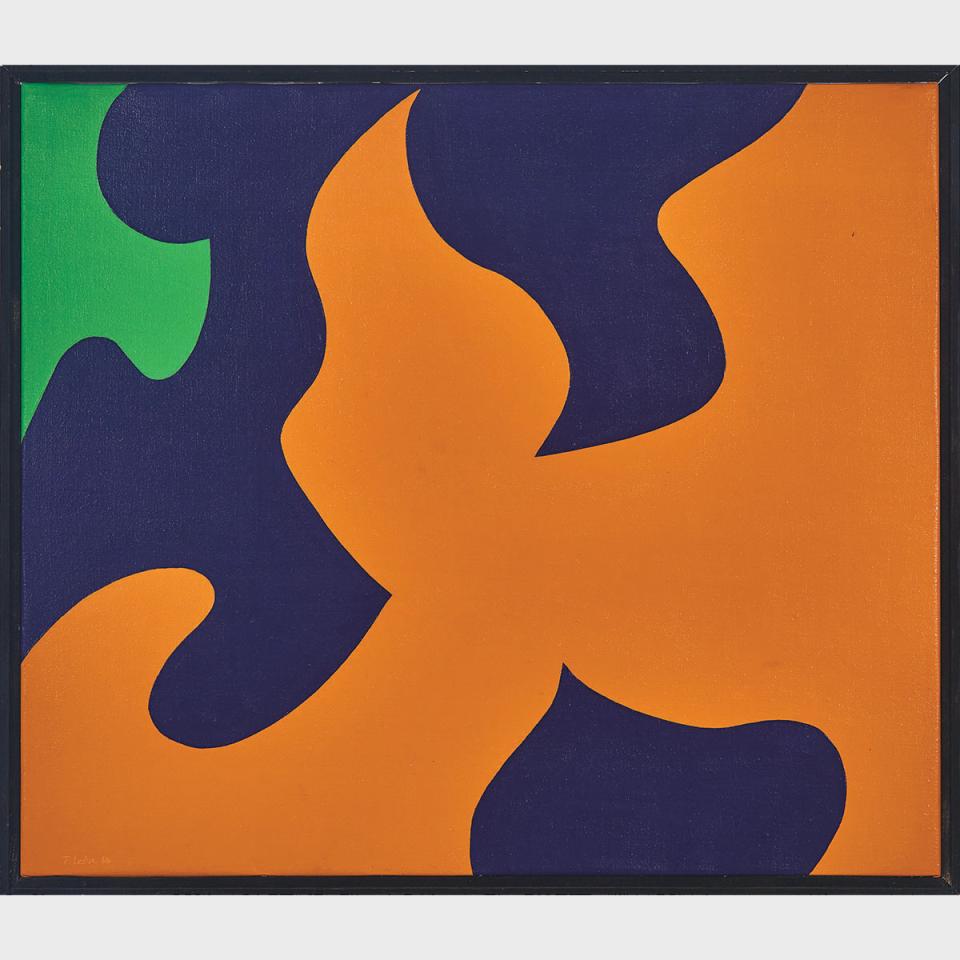Lot 66
FERNAND LEDUC

Additional Images

Provenance:
Yves Laroche Galerie d’Art, Montreal
Note:
Fernand Leduc (1916-2014), referred to as “the prince of light,” is considered to be one of the most important Québécois painters of his time in Quebec, although he lived a good part of his life in France. During his career, Leduc worked through many forms of abstract painting, beginning with automatism (he signed Borduas’ Refus Global in 1948), then moving to hard-edge abstraction with the Plasticiens in 1955. This shift occurred out of Leduc’s desire to bring more order to his work. The Plasticiens practiced geometric abstraction and rejected the concept of illusionistic space, preferring a flat, two-dimensional space.
Leduc’s early works in this style were populated with angular shapes formed by razor-sharp lines (“razor-edged,” to use Molinari’s term). The shapes begin to soften in the early 1960s, as Leduc introduced less rigid forms, gently curving lines and biomorphic shapes with no right angles. During the 1960s, he experimented with colour and form in compositions using two or three colours that reacted with each other, creating strong positive-negative effects. The biomorphic shapes are interlocked, like pieces of a jigsaw puzzle, which results in a more vibrant, dynamic composition as colours and shapes interact across the surface of the canvas, appearing to advance and recede in turn.
Fragment Vert is a fine example of the work he produced in the 1960s, before delving more deeply into colour theory with his microchromies in the following decade. The juxtaposition of the complementary colours, blue and orange, sets up a strong positive-negative relationship, and their intensity is heightened by the effect that each colour has on the other. A similar, though less intense, positive-negative dynamic occurs in the upper left corner of the canvas between the “green fragment” and the blue shape which abuts it. By adding another hue into the mix, albeit relatively small in area, Leduc altered the overall effect of the work. The key role of the green fragment is reflected in the title.
Leduc saw himself as a painter of light, in the line of the French Impressionists and Neo-impressionists of the nineteenth century, creating light through colour.



